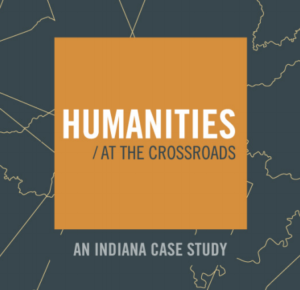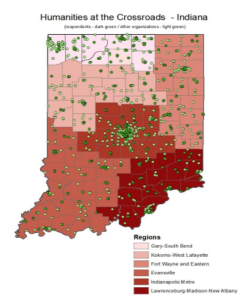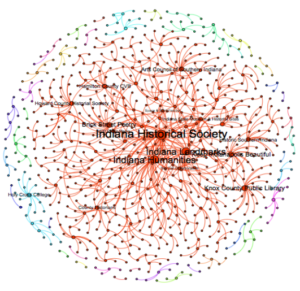The Case of Indiana Humanities
UEP’s weekly colloquium was visited this by Felicia Sullivan, senior researcher at the Center for Information Research on Civic Learning and Engagement at the Johnathan M. Tisch College of Citizenship and Public Service. Sullivan spoke about social network analysis (SNA), and specifically how knowledge about networks can be used to inform policy, build coalition capacity, strengthen social environments, and improve connectivity. Since the 1950s SNA has been a core concept and methodological way to look at social patterns. It allows social structures to be visualized in a way that displays the types of relationships within the network.
In a report released in 2014, Sullivan used SNA to map the “ecosystem” of humanities in the state of Indiana. 2,147 surveys were sent out, with 390 network participants responding.
Researchers looked at the size and structure of network members, the central organizations, key bridge-forming organizations, and used that to assess the resiliency of the network as a whole. Findings showed a massive web of relationships, most of which were clustered around urban areas of Indianapolis and Gary, as well as some of the suburbs of Louisville, KY. The social structure of the network is centered around the Indiana Historical Society, with Indiana Landmarks and Indiana Humanities acting as key bridging organizations. On the outer areas of the SNA diagram below, much smaller networks and individual organizations exist without any connection to the broader network.
According to Sullivan, these features make the Indiana Humanities Network vulnerable if one of the central organizations were to fail. If Indiana Landmarks disappeared, huge portions of the network would lose all connection. She recommends strengthening the core hub and building bonds between the central portion and new bridge organizations.
For those interested in using Social Network Analysis in their own research, Sullivan suggests to start with Gephi, free software that works on PC, Mac and Linux. More information about Felicia Sullivan’s work and the Tisch College can be found here.


